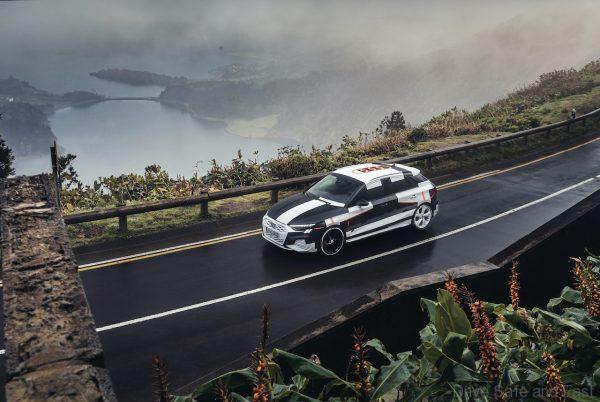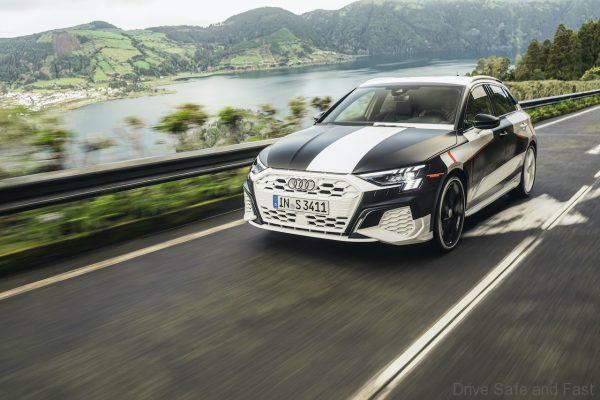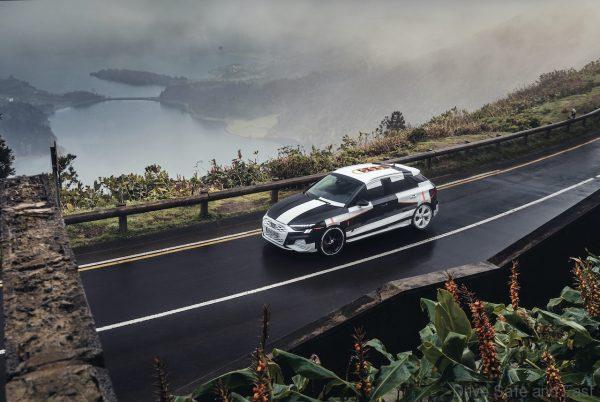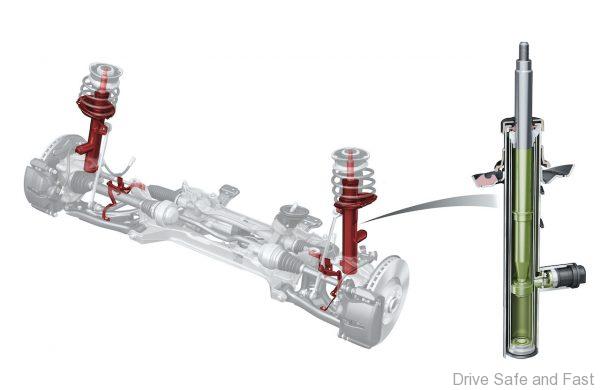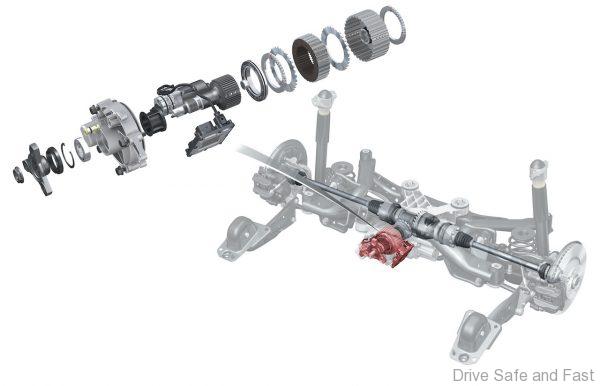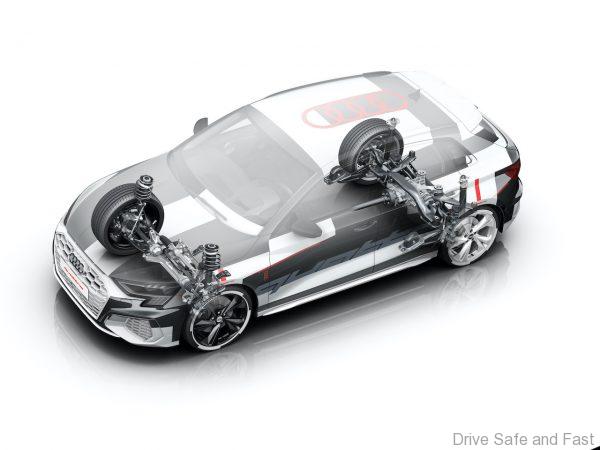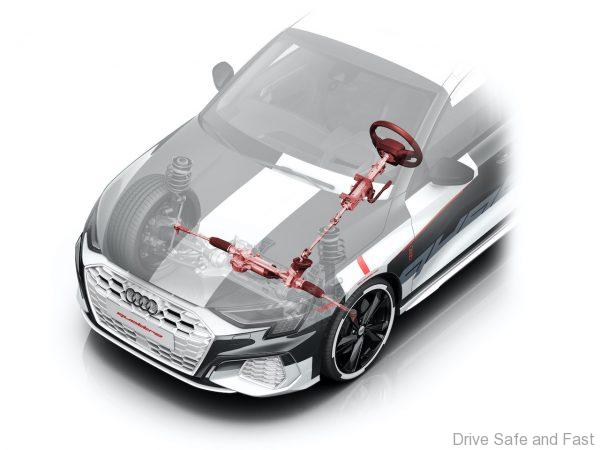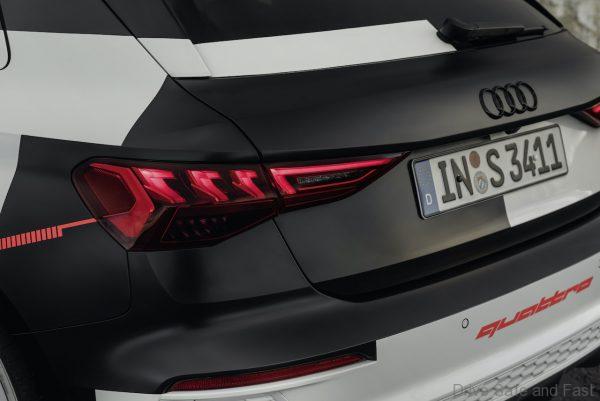The Audi A3 is one of the company’s most successful models, paving a way from new customers to get into the brand through a relatively compact and affordable package. The third generation made a couple of big leaps, introducing a saloon variant as well as utilising the MQB platform for greater flexibility.
The 4th generation Audi A3 is currently being driven by journalists for the first time and will be shown for the first time at the 2020 Geneva Motor Show. Here’s what it’ll bring to the table.

- quattro with specially configured electronic torque distribution control
- electromechanical steering
- Super quick-adjusting adaptive damper control
For more details on each of these elements, check out the press release below.
PRESS RELEASE
Audi will be celebrating the world premiere of the new A3 Sportback at the Geneva Motor Show. Prior to this, the premium manufacturer is sending the fourth generation of its success model to take a very special test: On São Miguel Island in the Azores archipelago, journalists will test the compact sports car and experience the highest level of driving dynamics on challenging routes.
Pure emotion: the original thought
In a place where volcanoes once created a whole chain of islands and where there is a high level of volcanic activity, Audi is demonstrating the core of its DNA: the quattro drive. The fourth generation of the A3 will present itself in its most emotive form in the pristine landscape of São Miguel, where the spectacular Azores Rallye is held. The all-wheel drive in the compact model is the latest stage in the evolution of a successful technology. An electro-hydraulic multi‑plate clutch that is managed by a precisely tuned all-wheel software forms its core. Aside from providing the A3 with a maximum level of stability, grip, and driving pleasure, it is also extremely efficient. In interaction with the adaptive suspension and the progressive steering, this results in a sporty performance that impresses in tight winding roads and varied mountain and valley stretches in particular.
Intelligent regulation: the quattro drive in detail
The clutch is located at the end of the prop shaft, in front of the rear axle differential – an installed position that benefits the axle load distribution in particular. Inside is a package of plates that operate in an oil bath. Its metal friction rings are arranged behind one another in pairs – one ring of each pair is rigidly meshed with the clutch housing, which rotates with the prop shaft; the other ring is meshed with the short output shaft to the rear axle differential.
Audi tailored the electronic torque distribution control specifically to suit the new A3 and integrated it in the Audi drive select dynamic handling system. It takes the data of the suspension sensors into account and detects not only the driving condition and road properties but also the driving style. The control unit uses this data as a basis to calculate a torque distribution that provides optimum efficiency and passes the value on to the clutch. This is particularly efficient.
The all-wheel drive distributes the torque with full variability between the front and rear axles. During normal driving operation, the majority of the engine’s power is transmitted to the front wheels. When driving off or when the front axle has little traction, the clutch diverts the torque at lightning speed: In this case, an electric axial-piston pump is activated, which applies up to 44 bar of hydraulic pressure to the clutch plates. The more the clutch plates are pressed together by this pump, the more drive torque is transmitted to the rear axle – the maximum is 100 percent. The clutch can already transmit part of the torque to the rear axle when the driver turns the steering wheel with a sporty driving style. As soon as the driver accelerates, the torque presses the A3 into the curve. During load changes, the distribution of torque allows precise turning into the bend, which further increases driving dynamics.
Full control: the Electronic Stabilization Control
The wheel-selective torque control, a software function of the Electronic Stabilization Control (ESC), is the icing on the cake when it comes to sporty characteristics. When the new Audi A3 drives through a curve at high speed, the program applies the brakes slightly to the two wheels on the inside of the curve. The difference in drive forces on both axles turns the car into the bend, allowing it to follow the steering angle precisely. This makes the handling even more agile, fluid, and safe.
The perceived response of the quattro drive is also changed in the three functional modes of the ESC. This allows the traction and driving stability to be adapted to the driver’s request. If the ESC has to regulate, its adjustments are gentle and virtually imperceptible. Maximum power transmission is ensured in ESC ON mode. This means that acceleration is safe and stable and performed with as little wheel slip as possible. By selecting Sport mode, the driver can drift on surfaces with a low coefficient of friction, such as snow, in a controlled, safe manner. The greater wheel slip in this case provides increased driving pleasure. In ESC OFF mode, the amount of possible wheel slip is nearly unlimited, allowing the Audi A3 to offer puristic handling characteristics.
Variable in every situation: the progressive steering
Due to their design, conventional steering systems always require a compromise between sportiness and comfort. The electromechanical progressive steering in the new Audi A3 solves this conflict. Its toothed rack and pinion have a special shape and toothing. This results in different gear ratios depending on the steering angle. When the steering wheel is turned in heavily, it is smaller and the steering is very direct. This decreases the steering effort in urban traffic and while maneuvering and increases the level of comfort considerably.
On curvy roads, the progressive steering increases the driving dynamics, allowing the A3 to offer an even sportier driving style. The steering wheel has to be turned just 2.5 times to get from end stop to end stop; the steering ratio in the center position is 14.3:1. The power assistance is in perfect harmony with this character and adapts to the driving speed. At low speeds, it is higher in order to enable easier maneuverability; as the speed increases, the power assistance is decreased continuously. This allows the driver to experience a calm, full steering feel even when driving at high speed on the highway.
The progressive steering is equipped with a highly efficient electromechanical drive that outputs power only when it is needed. It works together closely with various assist systems, such as the adaptive cruise assist, the collision avoidance assist, and the park assist.
New damper technology in the compact model: the adaptive suspension
Comfortably soft or sporty and taut? Both are possible with the suspension with adaptive damper control. Three damper characteristics ensure that the driver can experience the spread of the driving characteristics and enjoy particularly agile handling. Sensors measure the vertical acceleration of the body structure and the relative movement of the individual wheels in relation to it. The control unit processes its signal in a matter of milliseconds and adapts each damper to the condition of the road, the driving situation, and the driver’s requests in an individual and ongoing. The dampers include electromagnetically actuated valves that can be regulated extremely quickly and in a highly energy-efficient way. Depending on their position, they allow the hydraulic fluid to flow faster or slower, which changes the characteristics of the dampers between soft and hard.
The driver can switch the basic damper settings between the three modes of comfort, auto, and dynamic in the Audi drive select system. In doing so, the suspension increases the range between a soft rolling motion during smooth driving and with taut handling so that the driver gets an intense experience of the spread. In the case of a sporty driving style in curves, the dampers support the car and ensure that it does not dip as much when braking. This ensures that the wheels stay in closer contact with the road.
A question of character: Audi drive select
The Audi drive select system is the interface between the regulated suspension and drive systems and the driver. It can be switched between five modes – comfort, auto, dynamic, efficiency, and individual – via a physical button located near the gearshift or selector lever. If the driver selects the “individual” setting, they can freely specify their personal preferences to a great extent.
In every A3 model, Audi drive select varies the characteristics of the throttle response and steering assist. Depending on the equipment, the system also incorporates the S tronic, the quattro drive, and the suspension with damper control. It also influences comfort and safety systems such as the automatic air conditioning, matrix LED headlights, seat belt tensioner, and adaptive cruise control.




